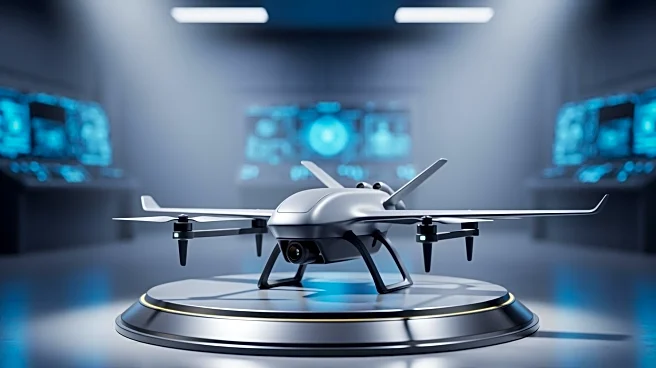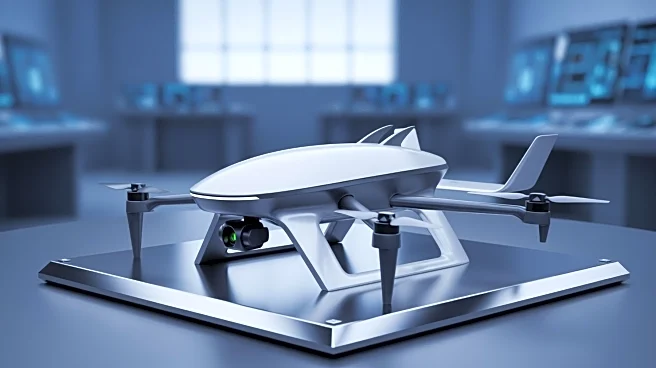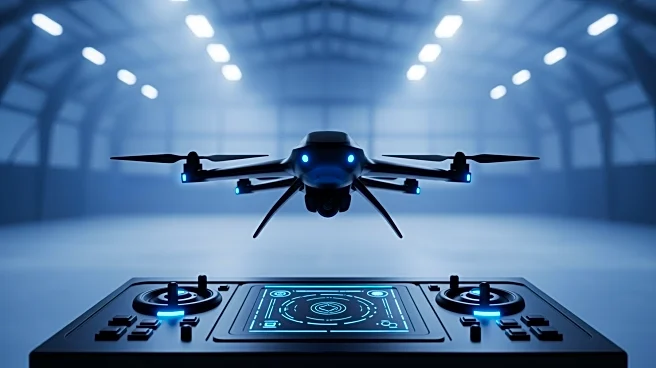What's Happening?
In a recent demonstration by the British Army, the Helsing HX-2 drone successfully hit five targets, showcasing its advanced capabilities. The demonstration highlighted the drone's precision and effectiveness
in a military setting. In contrast, the rival Virtus drone faced significant challenges, including a battery fire that led to one of its drones crashing into nearby woodland. This incident was described as a disaster for Stark, the company behind Virtus, as it struggled to compete with Helsing's technology. The HX-2's performance in the demo underscores its potential as a leading option for military applications, particularly in strike operations.
Why It's Important?
The success of the Helsing HX-2 drone in the UK demo is a significant development in the field of military technology. It demonstrates the growing importance of unmanned aerial vehicles (UAVs) in modern warfare, where precision and reliability are crucial. The setback faced by Virtus highlights the competitive nature of the defense industry, where technological advancements can make or break a company's reputation. For military forces, the ability to deploy effective drones can enhance operational capabilities and provide strategic advantages. The demonstration also reflects the ongoing innovation in drone technology, which is likely to influence future military strategies and procurement decisions.
Beyond the Headlines
The incident involving the Virtus drone raises questions about the reliability and safety of emerging military technologies. As drones become more integrated into military operations, ensuring their safety and effectiveness is paramount. The competitive landscape in the defense industry may drive companies to prioritize rapid development, sometimes at the expense of thorough testing and quality assurance. This event may prompt a reevaluation of safety protocols and development processes within the industry. Additionally, the success of the HX-2 could lead to increased interest and investment in AI-driven military technologies, potentially reshaping the future of warfare.











